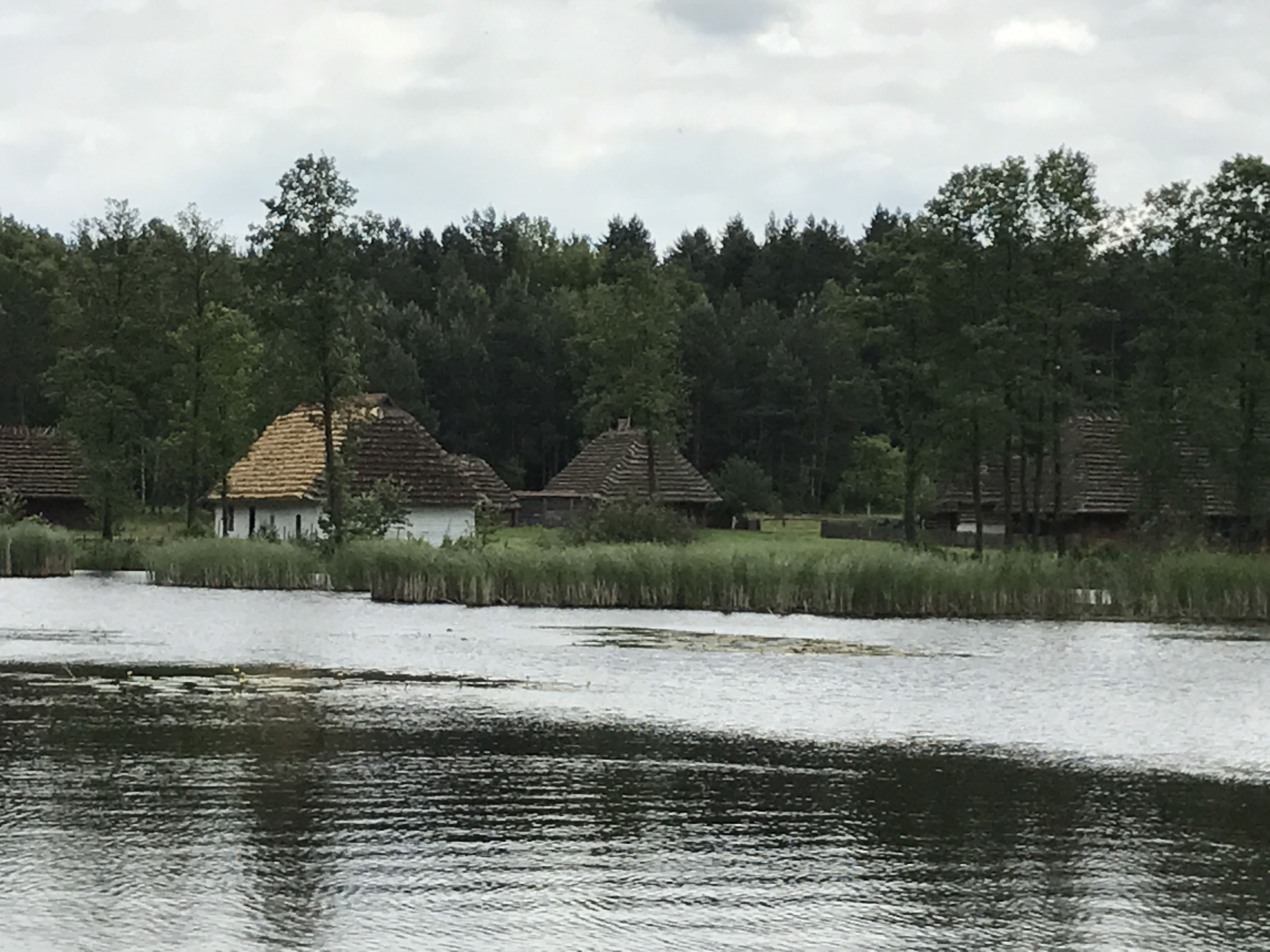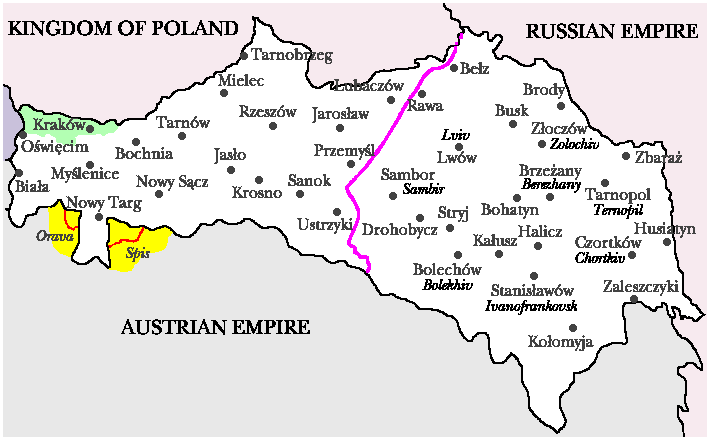
Galician Culture
The Austrian-Hungarian Empire stretched from Galicia in the north to Bosnia and Herzegovina in the South. What this meant is the area called Galicia was just one small section in the larger empire. Even within the Empire, Galicia was divided between West Galicia (today within the borders of Poland) and Eastern Galicia (today within the borders of Ukraine). Poles and Ukrainians, sometimes called Ruthenians or Rusyns, co-existed, along with Germans, Jews, Hungarians, Romanians, Slovaks and many more.
The map below shows the Austro-Hungarian empire and its ethnic groups. Poles are purple and Ukrainians are yellow and can be spotted in the top right in Galicia. There were pockets of a Polish majority in Eastern Galicia, mostly around L’viv.

Galicia was a large area and as such, a variety of different ethnic, sub-ethnic and religions co-existed, each with their own culture. It will be nearly impossible to list all of them here but the well known cultures have been listed below, under if they can be found in today’s Poland (Western Galicia) or Ukraine (Eastern Galicia).
In 1773, when the first partition of Poland occured, Galicia had about 2.6 million inhabitants in 280 cities and market towns and approximately 5,500 villages. There were 19,000 noble families (about 3% of the population). The serfs accounted for 1.86 million of the population, more than 70%. A few were full-time farmers but 84% of them had only small holdings or no possessions.
After the full completion of the partitions of Poland, and the new borders cutting Galicia off from many of its traditional trade routes, this resulted in stagnation of economic life and decline of towns in Galicia. The Austrian government determined to exploit Galicia and drained it of its manpower through conscription to the Army. The government also decided that the area would remain an agricultural hub, serving as a supplier of food products and raw materials, rather than developing industry.
This, unfortunately, led to widespread poverty in Galicia and eventually to many immigrating to North and South America.

Western Galicia
Language: Polish, German
Religion: Roman Catholic, minority Greek Catholic
Examples of Polish sub-ethnic groups include, but are not limited to:
Eastern Galicia
Language: Polish, Ukrainian, Rusyn, and many more
Religion: Greek Catholic, minority Roman Catholic
Examples of Eastern Galician sub-ethnic groups include, but are not limited to: